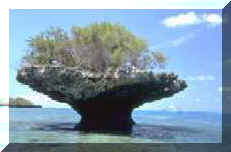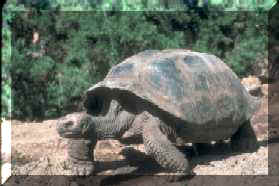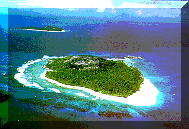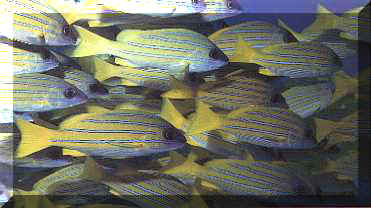Aldabra Group
The Aldabra Group consists of four major coralline islands and atolls located roughly between 46 and 48 degrees East, and 9 and 10 degrees South. The island group, may have been visited by Arab traders on their way to East Africa, the Comoros or Madagascar. Aldabra, the largest of the group, is shown on a 1501 Portuguese map that also shows the main granitic group, including Mahe. Without any sheltered anchorage from the monsoons and fresh water dependent mainly on rainfall, the islands had nothing to offer to passing ships. Eventually, as the major granitic group (Mahe ) was claimed, first by France and then by the British, control of the Aldabra Group came with that territory. The islands became part of The British Crown Colony of the Seychelles on 10 November, 1903. It was in 1966, that a proposal by the British for the construction of an air base on Aldabra, rallied British as well as American environmentalists, ornithologists, and scientists to the defense of the island. In 1982, the island was included by UNESCO as a world heritage site, and with additional protection by the Seychelles government for all of the Islands in the Seychelles archipelago, Aldabra will remain as the least spoiled atoll in the world and a laboratory for the study of nature in all its purity. In December of 1991, the atoll was opened to very small groups of tourists. Three to four day excursions are possible via air from Mahe to Assomption that includes a three hour boat ride to Aldabra.
Aldabra Atoll

Aldabra, the name derived from the Arabic word, meaning green, is the largest coralline
atoll in the world with an immense lagoon ringed by four coral islands, as well as ten
very small islands all together covering an area of about fifty square miles. The largest
of the four main islands is Grande Terre, with the other three, Ile Malabar, Ile Picard,
and Ile Polymnie, listed in order of decreasing size, completing the ring around the
largest lagoon in the world. A research station and observatory on Ile Picard aids in
safeguarding the ecology of these unspoilt islands. As long ago as 1874, the need for
preservation was recognized by Charles Darwin and others who knew about Aldabra's giant
tortoises. They petitioned the governor of Mauritius (the islands were under French
jurisdiction at the time) to preserve and protect them. Of the four passes (channels)
connecting the lagoon with the sea, the largest, and certainly the most spectacular is
Grande Passe, between Ile Picard and Ile Polymnie. From the air, the channel with its
current etched bottom, like the branches of a giant tree, is clearly visible through the
clarity of the water in the lagoon. At low tide, parts of the lagoon show dry bottom. The
tides can be as much as ten feet and the outgoing tide courses through the passes at a
good ten knots. Within the lagoon, the shoreline is lined with mangrove trees that provide
ideal ground cover for breeding birds as well as for fish in exposed mangrove roots below
the water line. Aldabra has the worlds largest population of giant tortoises. About
150,000 of this species (average weight 150 pounds) thrive here. The Galapagos Islands are
home to a related species, and are the only other giant tortoises living in the wild on
this planet. Also unique only to Aldabra is the coconut crab. The white-breasted rail, a
bird that has evolved to where it can no longer fly is also found only here. Other
examples of the indigenous bird life include the the sacred ibis and herons. Terns and
frigate birds are in abundance about the unusual shaped coral banks.

Assomption Island

Assomption is a somewhat crescent shaped island, with a brilliant white sand beach on a sheltered bay located inside the crescent. The landscape of this coral island is rough and rather arid, with only shrubs and a palm trees for cover. A program of tree planting is in progress to supplement the vegetation. What the islands landscape is in short supply of, the surrounding seascape more than makes up for it. Assomption is encircled by a coral reef that slopes away to a white sandy bottom with coral heads as big as the size of a compact car. Visibility beneath the surface is incredible, down to 150 feet or more. The variety of sea life defies description, schools of nine-line sweetlips, sea cucumbers, shrimp, crab, urchins, starfish, and lobster. Scenes in Cousteau's epic documentary film, "The Silent World", were filmed here by then young director, Louis Malle.
Astove Island

Astove, an island only two miles long, is close by and due south of the Cosmoledo Group and also about a hundred miles east of Assumption and Aldabra. Even then, the island is totally out of sight from anywhere else. From the air, the island looks like a mirage floating on a translucent blue sea. An abandoned coconut plantation is the only evidence of an attempt for human habitation on the island. The flank of the island is rather steep and the edge of the reef rapidly drops off into the abyss. Marine life is comparable to all the other islands in the Aldabra Group.
Cosmoledo Atoll

The Cosmoledo Group is composed of a multitude of islands that are about a hundred miles from Assumption and Aldabra. Some of the islands are nothing more than large above surface coral heads with one wind blown Tree. Like its neighbors, the islands are a divers paradise. The shallow lagoon and reef are home to a colorful rainbow of marine life. Schools of tuna, snappers and grunts glide by the diver, perhaps some barracuda on the prowl. On and in the reef, there are sea anemones, sea fans, urchins, starfish, lobster, eel, and octopus.

| Aride | Bird | Cousin | Denis | |
| LaDigue | Mahe | Praslin | Silhouette |